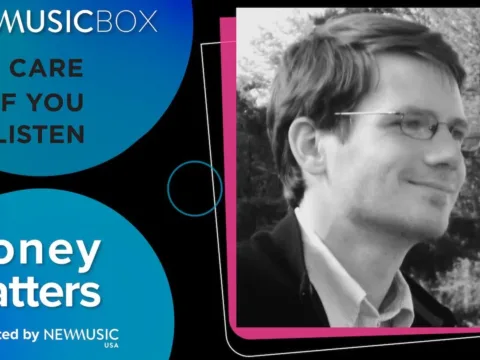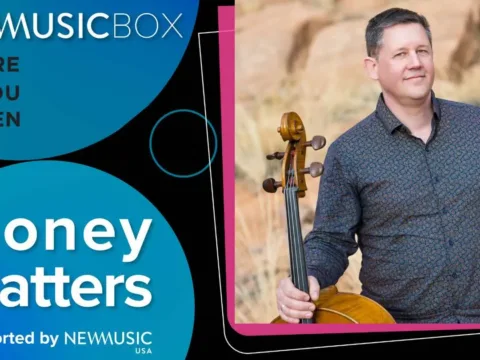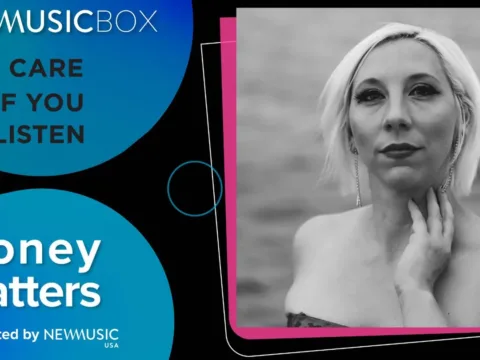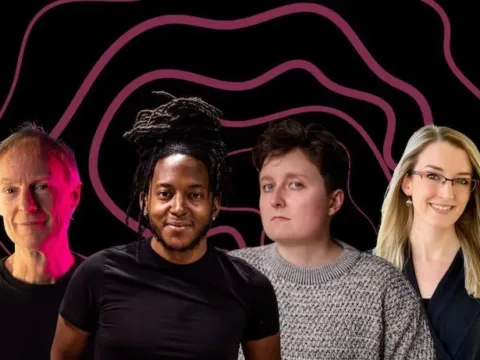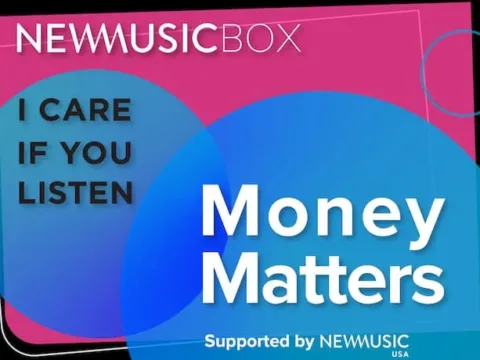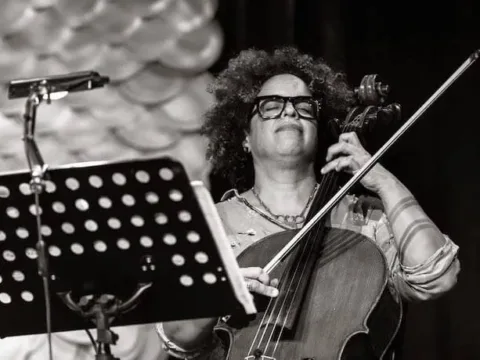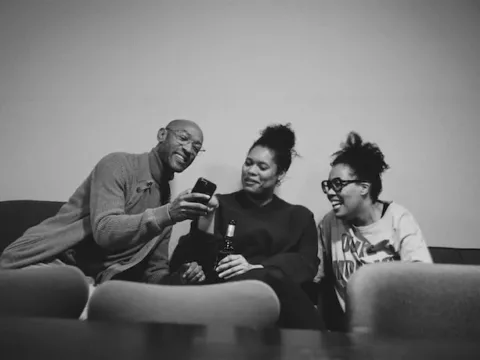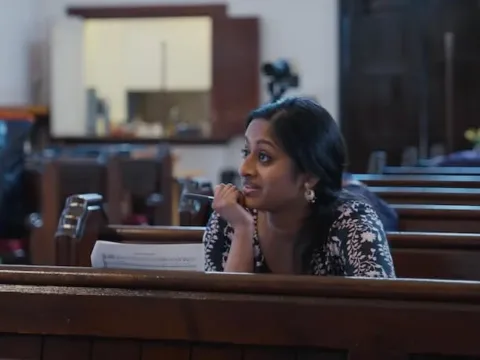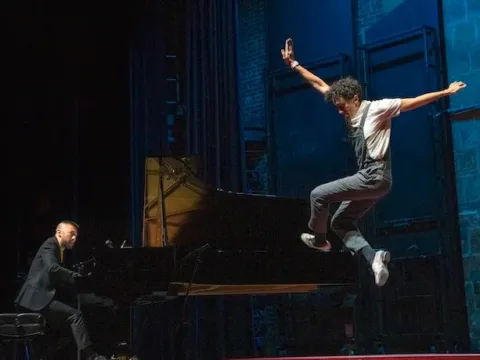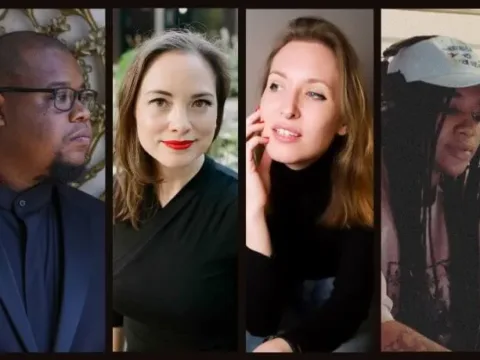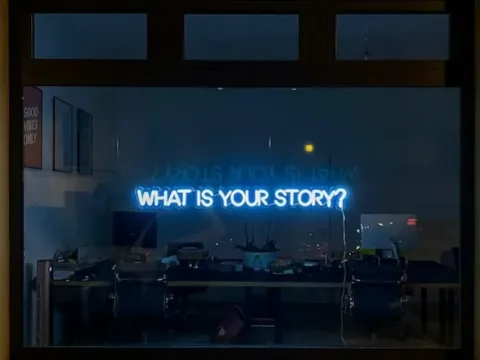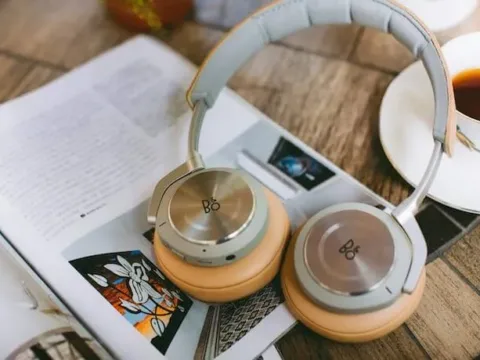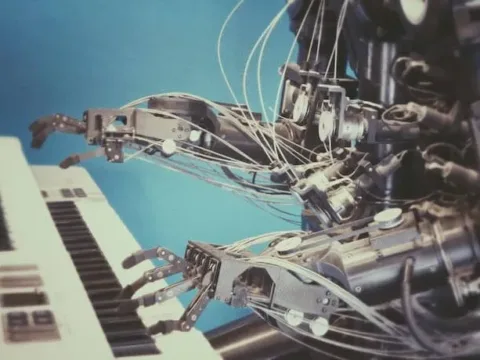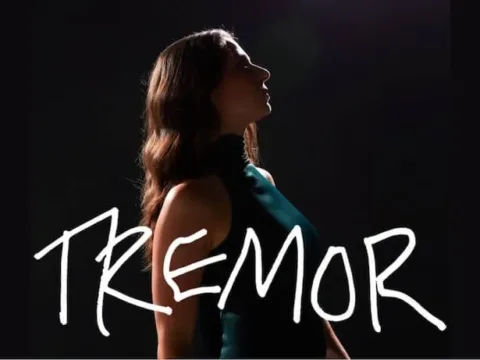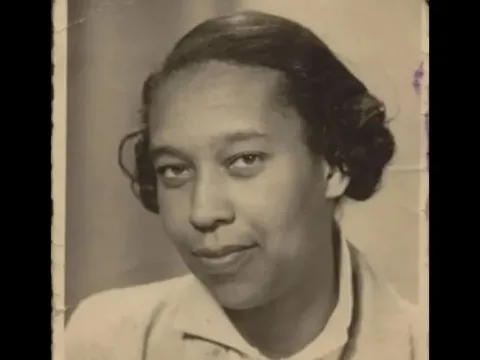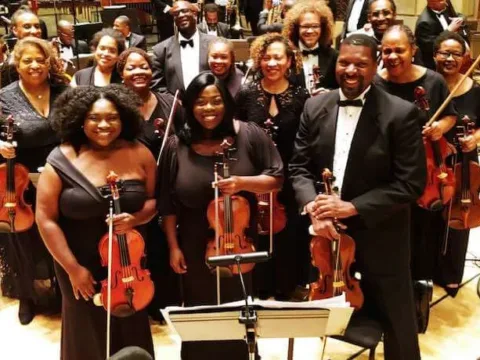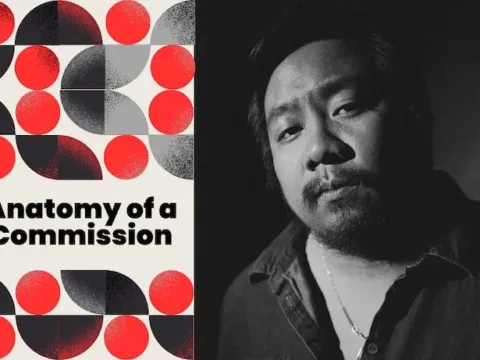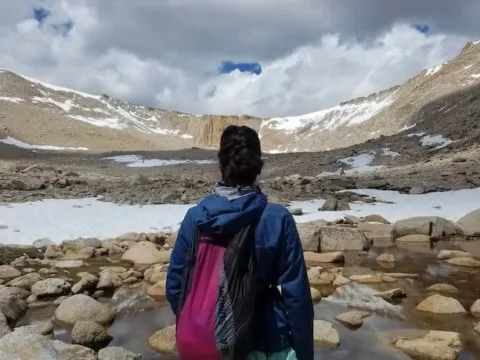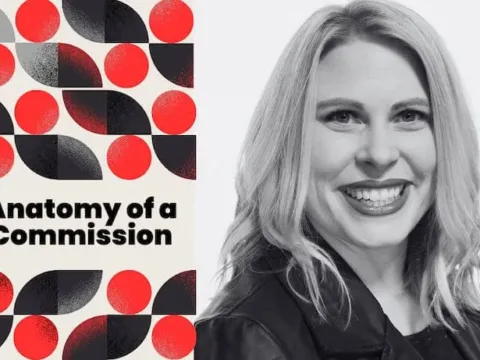ANXIETY
It’s a Sunday in June. After a record-breaking amount of snow this winter (which melted only six weeks ago), I’m once again looking out at brown, sun-burned grass in my backyard, a continuation of a yearslong drought in Minnesota. Last week, on retreat near the shores of Lake Superior, I witnessed hazy skies from Canadian wildfires, though the air quality index wasn’t nearly as high as in Minneapolis the same day, or New York two weeks ago, or San Francisco in 2020. Since returning home, the air purifiers in our house (for my husband’s ever-present allergies) have been running an almost non-stop code red.
I don’t feel as anxious as I did in the fall of 2019 amid the onslaught of news about Arctic Sea ice melting, wildfires raging, and billions of dead birds. The desire to crawl under the covers was high, and traces of that crushing despondency linger now. But escaping would clearly serve no one, and in a last-ditch effort to make myself feel marginally better, I did what I do — reached out to others to make music.
For the past three and a half years, I’ve been immersed in my project “Prayers for a Feverish Planet”; my call for solo piano scores yielded close to 200 pieces, and I’ve also begun to commission new piano works that address climate disruption. Maybe it’s because we haven’t normalized having climate conversations with others (one of the most important things we can do, according to climate scientist Katharine Hayhoe), but I was surprised to discover there are hundreds of composers, scattered across the globe, who’ve written pieces responding to their own anxieties about this crisis. Their works address musical representations of CO2 emissions, single-use plastics and “stuff,” disappearing coral reefs, and deforestation, and this music has allowed me to sit with, process, and even move beyond some of my own fear, grief, and anxiety.
—
The score of Vanishing (2020) by Stephen F. Lilly includes performance notes (“The pianist chooses a map to navigate”) and program notes. Upon my initial reading of the program notes, I encountered this information:
According to the National Oceanic and Atmospheric Administration (NOAA), sea levels rose 3.4 inches between 1993 and 2019. This was due in no small part to an increase in meltwater from the planet’s glaciers and ice sheets, as well as thermal expansion within the world’s warming oceans. As a result of this and an uptick in extreme weather events, five of the Soloman Islands, eight Micronesian Islands, and one island each in the Hawaiian and Japanese Archipelagos have disappeared in recent years in the Pacific Ocean alone.
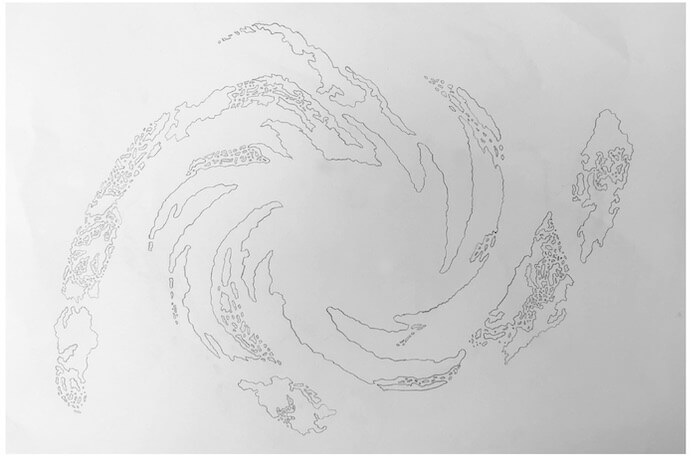
I’m not sure I can adequately convey the shock I felt when reading these notes. I pay attention to the news, and until encountering Stephen’s piece, I hadn’t heard this. Of course I’d been (intellectually) aware of disappearing islands in the Pacific, but Hawaii seems so close, so tangible. So… fragile. As far away as it is from my little house on the Minnesota prairie, Hawaii is part of our country (exploitative colonialist and capitalist issues aside). This island, swallowed up by the ocean, was uninhabited, but still… Hawaii?
The musical concept behind Vanishing mirrors this anxiety, recasting “the piano as a soft, delicate world out of balance.” Islands are portrayed by single notes or clusters; mechanical noises — from pedals, dampers, and releasing the keys — represent the sea: “… noises that typically only support the instrument’s sonic output… rise to encroach upon the land.”
COURAGE
I continue to be amazed and grateful to all of the composers who have generously shared their intellectually engaging, highly imaginative, provocative, devastating, and inspiring pieces with me. It takes immense courage to write music that engages deeper questions about the climate crisis, and to share this work with others. It takes courage to wake up day after day and choose to continue to make art. The etymology of “courage” is heart; a heart-centered, courageous approach to music-making helps me personally to combat the encroaching angst and dread of climate disruption.
—
Ian Dicke composed White Parasol (2008) after reading a BBC news article about the loss of ice shelves in the Canadian Arctic. The program note states:
The ‘white parasol’ at the top of the planet reflects energy from the Sun straight back out into space, helping to cool the Earth. Further loss of Arctic ice will see radiation absorbed by darker seawater and snow-free land, potentially warming the Earth’s climate at an even faster rate than current observational data indicates.
White Parasol has become a favorite of mine, with its “Ice Cracking” tempo, startling sfffz accents, rapid-fire repetitions, and crashing chords. I can’t help but imagine huge ice sheets collapsing with a sonic boom into the ocean every time I play it, hearing in my inner ear the “substantial calving events” mentioned in the BBC article. More abstractly, the piece speaks to me of a multi-dimensional idea of time: slowing down, speeding up, running out.
In Unsolaced: Along the Way to All That Is, author Gretel Ehrlich recounts time spent in Greenland, not far from the Canadian Arctic. She spoke with people who have witnessed dramatic changes to the ice, making their previous ways of life unsustainable. “That loss constitutes an odd kind of fullness,” she writes, “and despair empties out into an unquenchable appetite for life” (240).
I find both solace and courage when reading these experiences of others and playing their works. Solace and courage that, out of my own despair, I too can find an unquenchable appetite for music, art, and poetry; for gardens, connections — and for life.
—
Speaking the truth also requires immense courage. Sometimes it’s easier to speak these truths through music. Gunter Gaupp writes of his electroacoustic work Those Who Watch (2020):
In the piece’s electronic accompaniment, voices of news anchors and oil lobbyists swirl in a cloud of mischaracterizations and misquoted statistics. Meanwhile, the voices of scientists and activists are pitched down and distorted beyond understanding — only really audible in moments of quiet sincerity. The soloist, then, serves as a mouthpiece for my anxiety as the piano stews in its own angst and ignores a path to meaningful change.
This piece grooves. That groove hooks you. And then you hear lies spewed by those who gain from them. The ever-increasing piano texture and the ever-crescendoing electronics embody anxiety, and also courage — the courage to use art, the courage to dare to speak the truth. What we say and do matters.
IMAGINATION
In The Future Earth, meteorologist and climate journalist Eric Holthaus writes that “the future will require the creativity of all of us” and emphasizes the necessity of developing the capacity for radical imagination.
Sometimes creativity is in the art itself — contemporary composers are wildly imaginative! Sometimes it shows up in the way we present and frame the art. For Earth Day 2022, I presented an eight-concert series that featured 60 compositions grouped loosely by theme, including Water, Human “Progress,” and Trees and Hope. And for each program, I also invited a speaker to join me on stage or by pre-recorded video: a climate activist from Minneapolis, a hydrologist, professors from environmental studies, a former biology professor/tree expert who worked on climate policy in Washington D.C. for two Minnesota senators.
—
Of his work frostbYte – chalk outline (2015), Daniel Blinkhorn writes:
chalk outline is electroECOustic and videophonic in nature, using the Svalbard coastline… as a metaphorical reference to the (antiquated) forensic technique of drawing a chalk outline around the deceased.
Svalbard, Norway, is north of the Arctic circle; it’s home to the Global Seed Vault. Blinkhorn utilizes both video and audio samples and recordings from this locale, and the work is an astonishing, imaginative integration of piano, audio, and video. The coordination of the three elements renders the evocative subject even more powerful with dramatic landscapes, sonic textures, and startling images of machines superimposed against the water and ice.
For the synchronization to work, I use the stopwatch on my phone to perform. In the final minute of the piece, the piano remains tacit while the A/V track continues. I sit on the piano bench and listen to the fading electronics, while I simultaneously watch the seconds tick forward. Inevitably, I experience a curious sensation of time running out.
Joy
It hardly seems possible to find joy in a project about climate change. And yet, beyond all odds, I have, in both concrete and abstract ways. I’ve been able to engage with many composers, most of whom I didn’t know prior to this work. What a delight to explore and learn their music, to speak with them over Zoom, even to meet some of them in person; to develop relationships with them, to consider future projects together.
During the pandemic I also immersed myself in yoga via two teacher trainings; in my studies, I learned that one definition of “dharma” is action that benefits you, and also benefits everyone else. Though it is not easy, this work feels dharmic to me. In the anthology Not Too Late: Changing the Climate Story from Despair to Possibility, Mary Annaïse Heglar makes a point of saying, “This is a practice, not a perfect… you’re never too late or too small to help.”
—
Vanessa Cornett’s piece Our World So Freely Given quotes the hymn “For the Beauty of the Earth.” Her program note states:
Although the original melody is preserved, the harmonies and voice leading feel not quite right: twisted, troubled, perhaps feverish at times, but with sonorities that are not altogether displeasing. As the harmony becomes even more dissonant, the bassline of the hymn gradually detaches itself from the melody, transforming into the ancient dies irae chant which originally referenced the day the world “dissolves into ashes.” Yet, the melody remains steadfast. This paraphrase offers the opportunity to express gratitude for something that, despite being tarnished, is still beautiful in its own way as it struggles to survive against all odds.

As the work proceeds in time, the harmonies disintegrate. Breaking down, growing slower and softer. A defamiliarization of the known melody. (Anxiety.) Cornett emphasizes that the work “should be introspective and deeply expressive,” and that “the performer should feel free to use any phrasing, dynamics, or rubato that makes each performance intimate and unique to her.” (Courage.) I’m struck by the reference, once again, to time: stretching back, looking forward; the concurrent use of medieval chant, a 19th-century hymn, and 21st-century harmonies. (Imagination.) Gratitude, beauty, survival and resilience. (Joy.)
I am a fan of Rebecca Solnit’s writing. Amid discussions of gardens and landscapes, she muses on the imperative of finding beauty as an act of rebellion in Orwell’s Roses. Has there ever been a more important time to use music as an act of rebellion, as a catalyst for change? In the aforementioned anthology Not Too Late, Solnit argues that:
To hope is… [to know that] we who are supposed to be weak have great power together, power to change the world, have done so, and will again. To know that the future will be what we make of it in the present. To know that joy can appear in the midst of crisis, and that a crisis is a crossroads.
Some of my concert attendees last year indicated that they wished I’d ended on something more hopeful. There are, to be honest, only a handful of pieces in my project that are hopeful. I now close with a more uplifting piece; prior to playing it, I share some of the books I’ve mentioned here, along with The Future We Choose (the authors also appear on the Outrage and Optimism podcast) and All We Can Save.
For musicians, additional resources include:
- “Climate Intelligence and Action for Artists,” an offering through Gabriela Lena Frank’s Tidriks Distance Learning with physicist Rob Davies
- Tempo Music for Climate Action
- Landscape Music
- Ecomusicology as well as Ecopoetics
May your own music making inspire others. May it serve as a catalyst, and institute the best kind of rebellion. And may you find courage, a radical imagination, and joy at this crossroads.
I CARE IF YOU LISTEN is an editorially-independent program of the American Composers Forum, and is made possible thanks to generous donor and institutional support. Opinions expressed are solely those of the author and may not represent the views of ICIYL or ACF.
You can support the work of ICIYL with a tax-deductible gift to ACF. For more on ACF, visit the “At ACF” section or composersforum.org.

